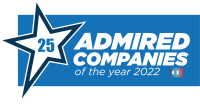Business Process Outsourcing Services
At Canon Business Process Services, we’re experts in more than operations management, workflow improvement, labor, technology and automation. We focus on optimizing your internal processes and capitalizing on opportunities to streamline your business.
We make it our business to help you grow yours.
Canon helps you optimize your business. Attaining a measurable, sustainable improvement in business performance requires a holistic approach to operational excellence. Our innovative approach includes the latest technologies, workflow automation, Six Sigma™ methodologies and data analytics to enable business agility and your digital transformation.
Canon Has Been a Trusted Outsourcing Provider for More Than 40 Years
Among the Ways We Help You Advance Business Performance
What our clients say
Law Firm Improves Workflow and Eliminates Overtime With A Digital Mailroom
Financial Services Company Advances Workflows
Information Solutions Company Realizes 50% Increase in Productivity
Recommended Resources

A Client-Focused Culture Here at Canon
"We listen to our clients to develop the optimal process and technology solution customized to achieve the desired business outcome. Our team of certified experts gather the requirements, assess the current state and future desired state and provide a clear view into the implementation, change management and communication plans to ensure that expectations are met and results are realized. We value each and every relationship with an eye toward adding long-term business value."
Mark Walker
President












